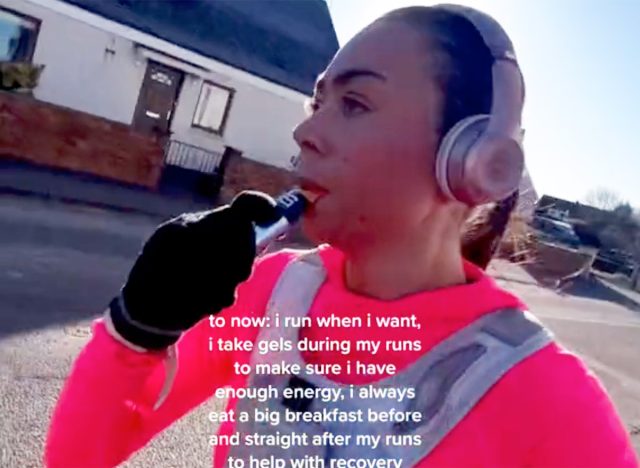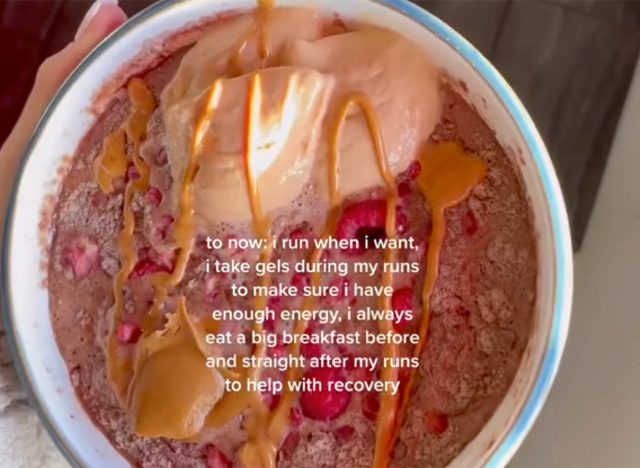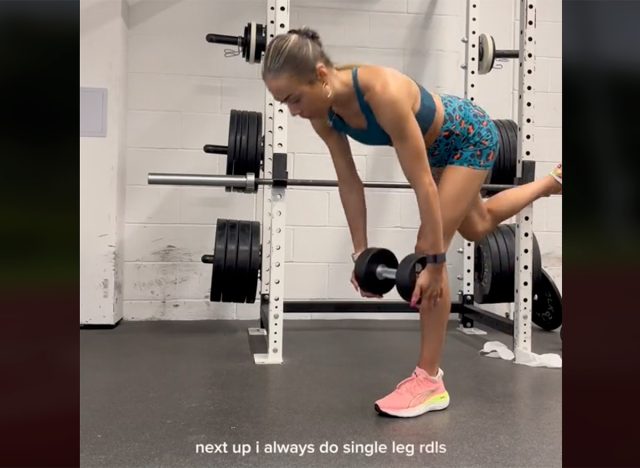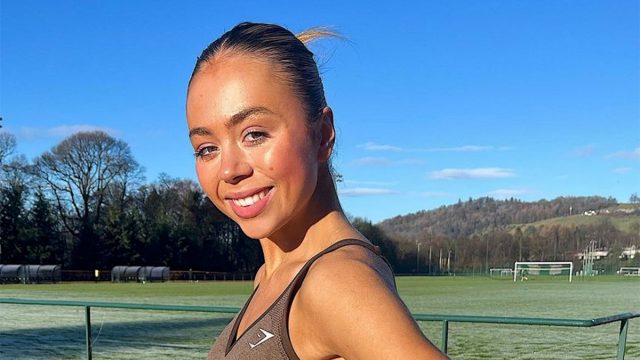The Best Tips to Improve Running According to Coach
Are you running all wrong? Emma Mailer (@em_fitx) is an online fitness coach and influencer who specializes in running and regularly shares videos offering advice on how to make the most of your running workouts. In a few recent videos, she shared a few helpful tips, revealing that prior to finding her health strides, she only ran to "burn calories" and that her runs were "fueled by rice cakes and black coffee." Here are her tips – and also what Body Network's Resident RDN, The Diet Diva, Tara Collingwood, MS, RDN, CSSD, LD/N, ACSM-CPT, a Board Certified Sports Dietitian, has to say about them.
Take Running Gels

"I take gels during my runs to make sure I have enough energy," says Emma. What are running gels? According to Collingwood, they are a great way to get quick energy during runs or any endurance exercise lasting more than about an hour. "They are a concentrated source of carbs and have some electrolytes," she explains.
"I always recommend drinking some water when you take the gel to prevent stomach upset. If you've never had one before, take just half the gel, fold it over and tuck it into a pocket and have the other half 20-30 minutes later."
Once you get used to taking gels and you feel like you want the whole thing you can take it. "Depending on how long you will be running, most people take one gel per hour in addition to some sports drinks with more electrolytes," she adds.
RELATED: Dana Linn Bailey Shares 3 Secret Tips That Will Transform Your Backside
Eat a Big Breakfast Before and After

"I always eat a big breakfast before and straight after my runs to help with recovery," Emma continues. "Trying to eat a combo of carbs, fruit/veg and protein within 30 to 60 minutes after the run is ideal for quick replenishment into the muscles," says Collingwood.
Don't Neglect Strength Training

In another TikTok she reveals 3 mistakes to avoid if you are a new runner. The first? "Neglecting strength training." Strength training helps "correct imbalances and weakness that can happen with running as well as helping with injury prevention by helping to stabilize the joints," explains Collingwood.
Don't Overdo It

The second mistake is "Doing too much too soon." Collingwood agrees that if you "ramp up your mileage too quickly" you set yourself up for injury. "Try to increase mileage by only about 10 to 15 percent each week," she says. "Give yourself at least one rest day and try to also do cross training instead of running every single day for your exercise."
Related: This Is Exactly How to Lose Body Fat This Year
Make Sure to Eat Enough

And finally, the last mistake is under fueling. "Not getting enough calories throughout the day can leave your body at risk of fatigue and injury," explains Collingwood. "Under fueling during long runs can definitely lead to running out of energy and not being able to complete the mileage, not to mention just feeling lousy and poor recovery."
💪🔥Body Booster: Before going for a long run, make sure your body is fueled with everything it needs.
@em_fitx its the mental glow up for me #edrec0very ♬ original sound – Holly <3





